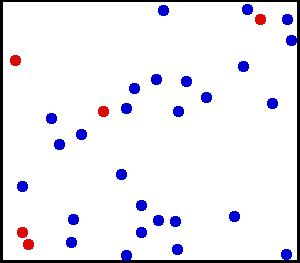
Back نظرية حركية للغازات Arabic Molekulyar-kinetik nəzəriyyə Azerbaijani Кінетычная тэорыя газаў Byelorussian গ্যাসের গতিতত্ত্ব Bengali/Bangla Teoria cinètica molecular Catalan Kinetická teorie látek Czech Молекула-кинетика теорийĕ CV Kinetisk gasteori Danish Kinetische Gastheorie German Κινητική θεωρία Greek

The kinetic theory of gases is a simple classical model of the thermodynamic behavior of gases. Its introduction allowed many principal concepts of thermodynamics to be established. It treats a gas as composed of numerous particles, too small to be seen with a microscope, in constant, random motion. These particles are now known to be the atoms or molecules of the gas. The kinetic theory of gases uses their collisions with each other and with the walls of their container to explain the relationship between the macroscopic properties of gases, such as volume, pressure, and temperature, as well as transport properties such as viscosity, thermal conductivity and mass diffusivity.
The basic version of the model describes an ideal gas. It treats the collisions as perfectly elastic and as the only interaction between the particles, which are additionally assumed to be much smaller than their average distance apart.
Due to the time reversibility of microscopic dynamics (microscopic reversibility), the kinetic theory is also connected to the principle of detailed balance, in terms of the fluctuation-dissipation theorem (for Brownian motion) and the Onsager reciprocal relations.
The theory was historically significant as the first explicit exercise of the ideas of statistical mechanics.